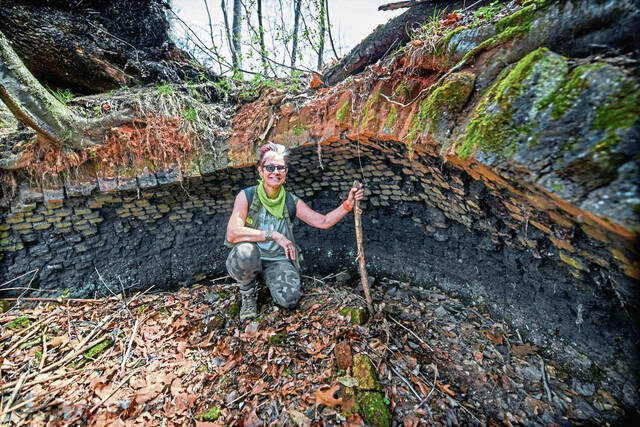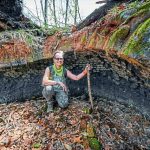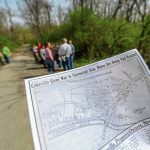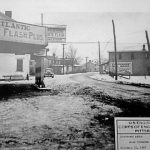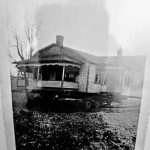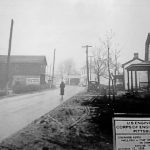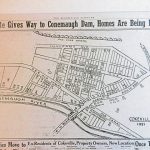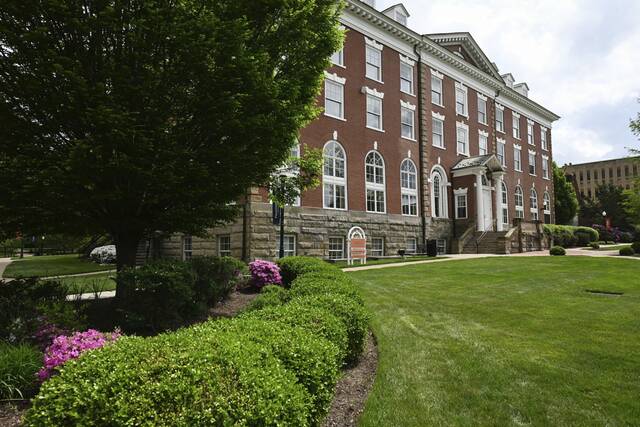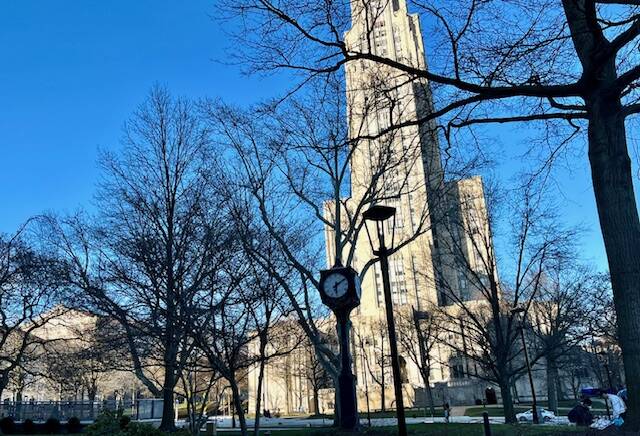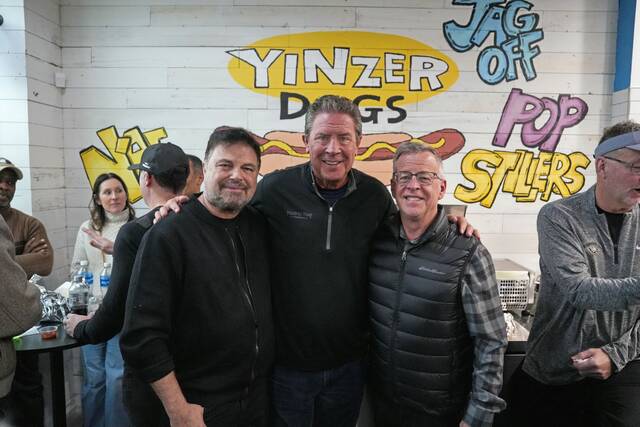When Ron Ross was 8, he used to climb up a hill overlooking his family’s Westmoreland County farm and watch houses being moved from the small village of Cokeville.
“It was like watching a ballgame,” said Ross, 78, of Blairsville, who lived in a 13-room, three-story farmhouse.
The procession was part of an early 1950s exodus where residents were forced from the Derry Township village to make way for the Conemaugh Dam.
In all, more than 100 families were forced to move — some leaving everything behind while others relocated their homes — so they were no longer inside the flood control impoundment area. Several scattered to Blairsville. Others moved to the Hillside area of Derry Township.
“Everybody knew everybody else and they loved that little town,” Ross said. “They were actually blown away by the fact they had to move. … They were very distraught. They were not prepared for this. It was a very emotional time for them.”
Across the region transportation improvements and hollowed-out coal mines left communities without the resources that sustained them.
“There’s more of those basic stories than we realize,” said Leslie Przybylek, senior curator at the Heinz History Center. “To me, the thing that makes it really interesting in Pittsburgh is that they’re a reminder of Pittsburgh’s sort of geographical and geological connection to the larger kind of social cultural context of the Appalachians that we don’t always think about to the same degree as places further south and west.”
Changing landscape
According to Przybylek, the phenomenon is common throughout the region after settlers in the early 1800s set up communities of three or four homes.
“A post office will spring up, a store will spring up and that’s a town,” Przybylek said. “By our estimations today, some of them were incredibly small places. But in an era when communities had to be more self-sufficient and transportation wasn’t as easy, it made sense.”
Throughout Pittsburgh, small communities were common, often formed by groups of immigrants.
As the city grew over the years, Pittsburgh annexed several communities, like Birmingham in what is now the South Side neighborhood, and many communities near Mt. Washington including Overbrook, Carrick and Brookline.
Others, however, essentially faded from existence as industry grew.
Nested to the side of Saw Mill Run Boulevard in Pittsburgh’s Beechview neighborhood, the Seldom Seen Greenway Park holds a trove of history that local historians are still learning about. Today the park is filled with archways and other ruins that all point to the community that once called the area home.
“Seldom Seen is this fascinating example of what was really this completely isolated, largely farming-based community,” Przybylek said. “People knew of its existence; and it seems like during prohibition at one point it had a lively trade as a home of some bootleggers, but they were quietly able to operate largely under the scenes.”
Over the years, however, rail lines were constructed, essentially cutting off the community.
A similar story happened at Port Perry, which was located along the Monongahela River between Braddock and North Versailles.
The town, which was constructed at the mouth of Turtle Creek, was largely home to coal miners. A 1903 map of the community shows it contained a school and various named streets. The Port Perry branch of the Pennsylvania Railroad passed through the northern part of the community and over the river.
However, industry would become the downfall of Port Perry. Rail lines cut the community off from other areas, along with the construction of Edgar Thomson Steel Works in Braddock. The community was largely gone by 1945.
“There’s a community where that visual sign of the small town literally getting suffocated over time by the rail lines and the steel plant that grew up around it, really is symbolic of what happens to a lot of communities up and down the Mon, although it might not be as visually dramatic as that,” Przybylek said. “There were so many places like that.”
Immigrants drawn to work
Coal patch towns were established after the coal industry took off around the 1840s.
According to Abby Tancin, assistant processor at The Coke and Coal Heritage Center at Penn State Fayette, coal quickly became the main industry for the area, resulting in waves of immigrants moving to the region for work. As the industry grew, so did little patch towns that workers called home.
“Because of this mass in flood of immigrants coming over and the populations increasing, these coal patches, or coal towns, started rising up because it’s easier for the companies to create living spaces for the communities. That way, all the workers are in one location,” Tancin said.
Related:
The landscape began to change in the 1940s and 1950s as the steel industry grew. Transportation also became easier, meaning that workers did not have to live close to the mines.
As the landscape changed, coal patch towns were often abandoned. Others were sold off to municipalities or individual owners.
In Westmoreland County, several were located in what now are Murrysville and Export, said Mike Mance, a history buff who grew up in Delmont. Mance, who blogs about his journeys to Western Pennsylvania’s hidden industrial past at coalandcoke.blogspot.com, pointed to places like New England in Murrysville.
New England was a company town for the Skelly Coal Co.’s Elizabeth Mine No. 2, Mance said.
The mine opened in 1900. It grew from 19 workers to more than 100 at its peak. By 1932, however, it had 11 employees.
“After 1932, the Elizabeth Mine would never be seen on mining reports again,” Mance wrote in a research document. “The area was heavily stripped in subsequent years, further disturbing the landscape, making it difficult to locate Skelly’s original haulage routes. The large slate dump is still extant behind the Friends Thrift Store in Export.”
Other places are still part of the landscape.
White Valley, Ringertown and Dunningtown — constructed around 1911 to house workers at the New York and Cleveland Gas Coal Co.’s Delmont Mines — are now residential communities in the eastern part of Murrysville, Mance said.
Similar communities are located in West Deer, including Russellton, Curtisville, Bairdford and Superior, said Jim Thomas, president of the Allegheny-Kiski Valley Historical Society board. He also pointed to Kinloch in Lower Burrell. All five are still residential communities.
Yellow Dog Village, however, located near Kittanning, is mostly abandoned.
According to a 2015 Tribune-Review article, the town was built in the early 20th Century by the Pittsburgh Limestone Mining Co., which owned and operated the mine along Buffalo Creek. The company built the village for workers under the condition that they promise to never unionize.
The Great Depression, however, caused the company to go bankrupt, leading to the demise of the village, which was bought and sold many times over the years.
“Once coal starts to move out or the industry begins to slow down, the coal companies begin to sell off the houses, whether it’s to the city or just individual owners,” Tancin said. “There’s no longer that need for that community-based idea.”
Despite the decline seen in several areas throughout the region, local historians are working to keep those memories — and Western Pennsylvania history — alive.
In Cokeville, Dana Spiardi — whose grandparents ran a small store, gas station and tavern — organized a weekend hike last year, which allowed several people to relive their days as Cokeville residents.
“That’s nostalgia,” Ross said. “Just to stand where I used to live, it just brings back a lot of memories.”


